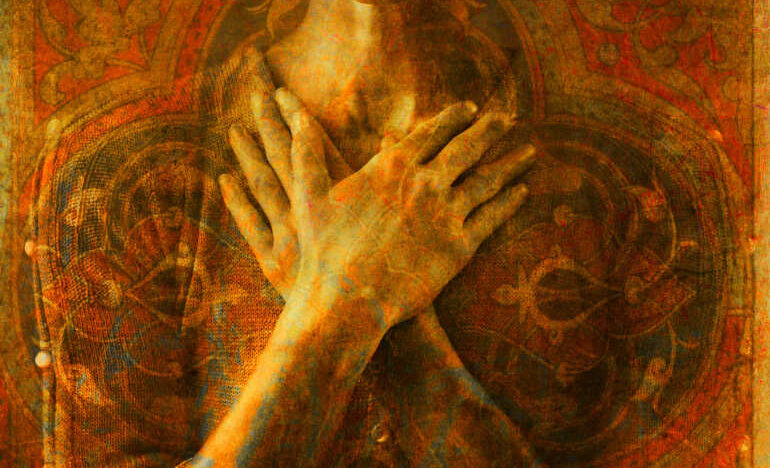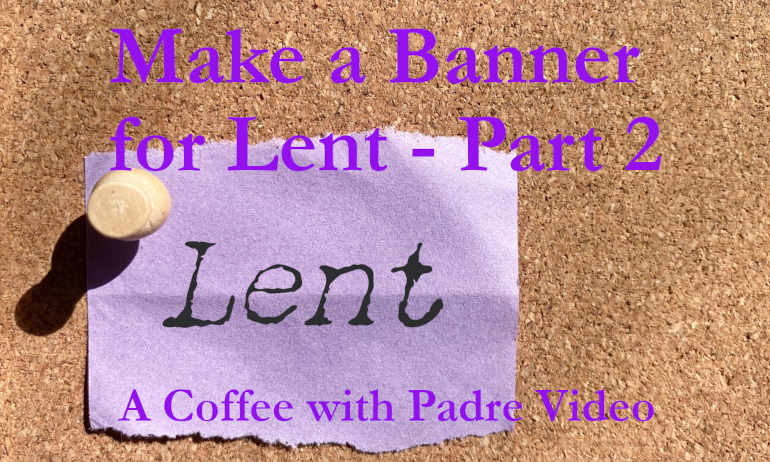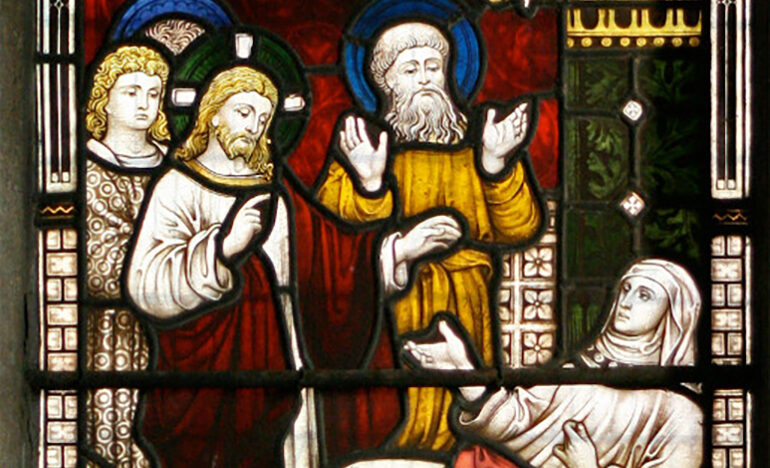A Look at Suffering from a Buddhist and Christian Perspective

By Kathy Keary
Part 14. Read all the parts of the Jesus and Buddha series here.
The foundation of Buddhism is known as the Four Noble Truths, the subject of the Buddha’s first sermon following his enlightenment. Each of these truths speak to suffering, an inescapable part of life. The Four Noble Truths are as follows:
- The truth of suffering (dukkha)
- The truth of the cause of suffering (samudaya)
- The truth of the end of suffering (nirodha)
- The truth of the path that leads to the end of suffering (magga) (Rasheta, 72)
The website, One Mind Dharma, likens the Four Noble Truths to a doctor diagnosing and treating a patient. The First Noble Truth is when the diagnosis is made. The Second reveals the cause of the illness. The Third says there is a cure. The Fourth is the prescription.
Let’s not overlook that suffering also stands at the heart of Christianity. The One who died on the cross for us out of unbounded love summons us to deny ourselves, take up our cross, and follow him (Matthew 16:24).
James Finley, a Catholic psychologist and retreat leader, in his DVD series, Jesus and Buddha: Paths to Awakening explains that the cross tells us that God does not spare us from hardship but sustains us in all things. As one of the most popular bible verses reveals: “For God so loved the world that he gave his only Son, so that everyone who believes in him might not perish but might have eternal life” (John 3:16).
The First Noble Truth is generally translated as “life is suffering.” Barbara O’Brien reminds us that the Buddha did not speak English so did not actually use the word, “suffering.” He spoke of “dukkha,” a word from the liturgical language, Pali. Translators find that there is no English word that encompasses the meaning of dukkha.
There are three categories of dukkha in Buddhism:
- Physical, emotional, or mental pain
- Anything that is not permanent or is subject to change
- Conditioned states defined as being dependent on or affected by something else (O’Brien, “Dukkha,” 2)
The Tibetan Buddhist nun, Thubten Chodron, explains that the term, “dukkha,” refers to the reality that things are not completely right in our lives. “Something is amiss; there are unsatisfactory conditions in our existence … Everybody has some difficulty, something that isn’t going well in his or her life … We continually feel something is missing, and we search for more and better.”
Finley eloquently asserts that God has designed the human heart in such a way that nothing less than infinite union with God will be satisfying. He describes dukkha as an estrangement from God. This brings to mind the wisdom of St. Augustine: “You have made us for yourself, O Lord, and our heart is restless until it rests in Thee.”
Never miss an article published on the Renewal Center website: Sign up to receive our newsletters
The Second Noble Truth asserts that greed or desire is the cause of our suffering. The actual word that is used in early Buddhist scripture is tanha, which is more precisely translated as “thirst” or “craving.” O’Brien explains that the Buddha instructed that this thirst is due to an ignorance about one’s self. In her words:
We go through life craving one thing after another to get a sense of security about ourselves. We attach not only to physical things but also to ideas and opinions about ourselves and the world around us. Then we grow frustrated when the world doesn’t behave the way we think it should and our lives don’t conform to our expectations.
The practice of Buddhism brings about a drastic change of this perspective. As a result, O’Brien opines that “the practitioner is better able to enjoy life’s experiences without judgment, bias, manipulation, or any of the other mental barriers we erect between ourselves and what’s real.”
The Third Noble Truth reflects the Buddha’s teaching that holds with diligent effort, one can put an end to thirsts or cravings. Dukkha can end when the causes of it cease (O’Brien, “Four Noble Truths,” 3).
New articles in this series are posted to the website every Monday. The full series can be found here: An Invitation to Something New: The Contemplative Life. On Thursday’s we’ll send an email to remind you of the articles.
The Buddha spent an enormous amount of time preaching about the Four Noble Truths with an emphasis on the fourth one. He prescribed the Eightfold Path as the remedy to dukkha (O’Brien, “Four Noble Truths,” 3). We refer you to the second half of our article, “A Solid Foundation: The Teaching of Jesus and the Buddha” for a detailed explanation of this cure.
The Four Noble Truths remind me of the righteous path prescribed by Jesus in the Sermon on the Mount. The Beatitudes stand as a road map for those longing to follow in the footsteps of the Bread of Life. We refer you to an article found on the website, Learn Religions to further explore the richness of this teaching, Matthew 5:3-12.https://www.learnreligions.com/what-are-the-beautitudes-701505.
References
Chodron, Thubten. Open Heart, Clear Mind: An Introduction to the Buddha’s Teachings. Boston, Massachusetts: Snow Lion Publications, 1990.
Finley, James and Rohr, Richard. Jesus and Buddha: Paths to Awakening. Albuquerque, NM: Center for Action and Contemplation, 2017.
O’Brien, Barbara. “Dukkha: What the Buddha meant by ‘Life is Suffering.’” Learn Religions. September 9, 2018. https://www.learnreligions.com/life-is-suffering-what-does-that-mean-450094?
O’Brien, Barbara. “What are the Four Noble Truths of Buddhism?” Learn Religions. April 23, 2019. https://www.learnreligions.com/the-four-noble=truths=450095?
Rosheta, Noah. No-Nonsense Buddhism for Beginners. Emeryville, California: Althea Press, 2018.
“The Four Noble Truths.” One Mind Dharma. https://oneminddharma.com/four-noble-truths
Illustration by Elena Ray Microstock Library © Elena Ray
[Kathy Keary, a Precious Blood Companion and spiritual director, holds a master’s degree in theological studies and is a graduate of the Atchison Benedictine’s Sophia Center’s Souljourners Program, an intense study of spirituality and spiritual direction. Kathy believes that the divine is present and active in all of life and encourages others to be awakened to the God in all including the divine within. She enjoys accompanying others on their journey to wholeness discovering the person they were created to be.]
We’d Like to Hear From You!
We’d like to know what you think about this article. Send us a comment using the form below. Do you have a suggestion? Is there something you want to learn more about? Send us a note.
Related

Making a Banner for Lent Part 2
A Coffee with Padre Video
Fr. Timothy finishes his Lenten banner and continues his reflections on how colors and materials become potent symbols that bring the Lenten season alive. The final banner serves as a visual reminder of our spiritual journeys.

Lent Video Four — Guided Meditation: ‘Traveling in the Dust of the Rabbi’
In this video, Fr. Ron reads the Gospel, Mark 1:29-34, for you and then leads you through a guided meditation, taking you deeper into that story. He calls this experience “an example of traveling in the dust of the rabbi.”
Categories
Assembling God's Puzzle Coffee with Padre Cooking & Spirituality Encounters of the 4th Kind Family Matters Reflections on the Eucharsitic Prayers Spiritual Resources Taize Prayers The Contemplative Life Traveling with Pilgrims of Hope Uncategorized Videos Week of Prayer for Uhristian Unity When you need a little help
